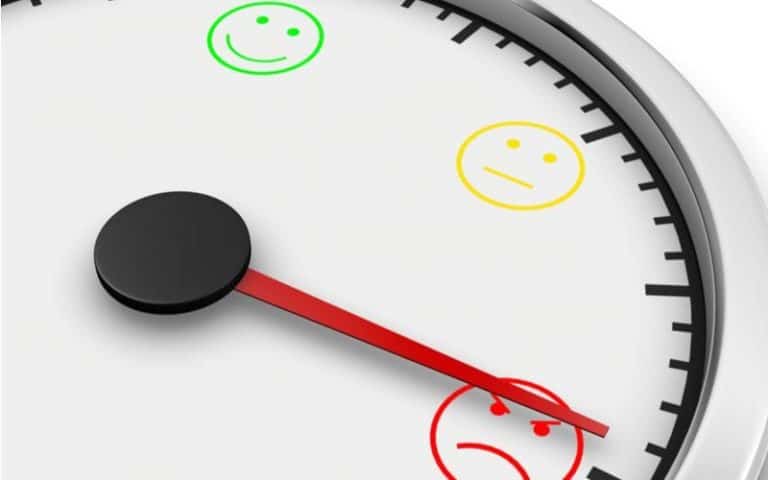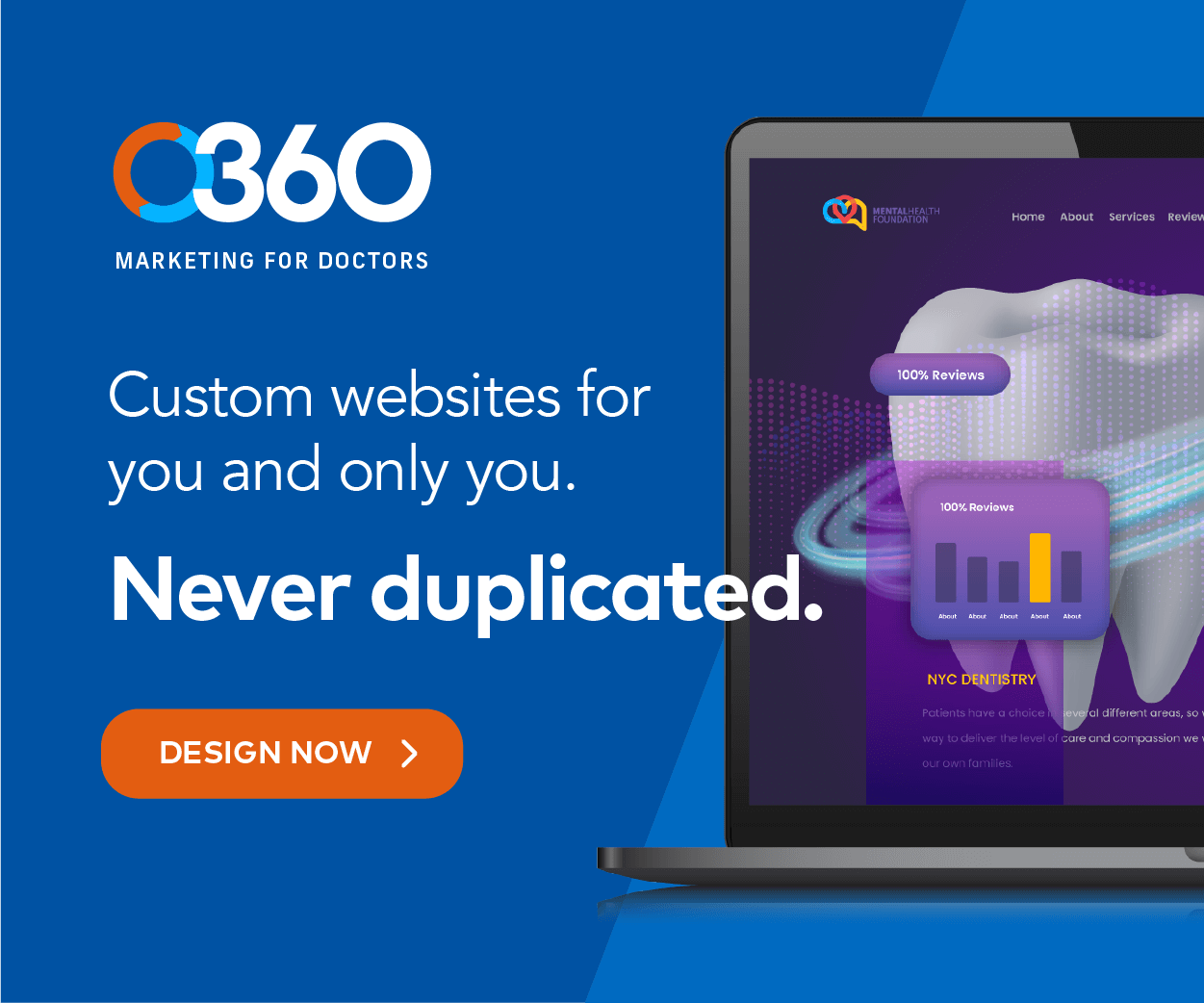More people than ever are searching for medical information online when they need health advice. Color, being an important part of healthcare website design, can have a significant impact on how people perceive popular websites that have the purpose of providing medical information online. When your patients search online for valuable practices and reasonable healthcare, color can impact the patient’s perception, and different color schemes can produce different results. As healthcare wenbsite design becomes more patient-centric, fine-tuning color palettes and understanding how color works can benefit any growing practice looking to communicate with its audience.

How Color Psychology Impacts Healthcare Website Design
Color psychology examines how colors influence human emotions and behaviors. It’s a field that mixes art and design with marketing and psychology, offering insights into how our minds perceive color and the emotional reactions that follow from it. In healthcare web design, this tool is crucial for designing a web environment that communicates the right message and evokes the desired responses.
When creating your healthcare website design or brand logo, color is very important. Practices should always consider the target audience – men, women, adults, children, and even social class, as different colors speak to different groups. Choosing the right color can attract the right audience and affect their mood and behavior in the following ways:
Emotional and Psychological Effects: Colors can calm, motivate, inspire, and warn people. Blue, for instance, is the most commonly used color in healthcare website design for its ability to evoke calmness, trust, stability, and security. On the other hand, red signifies urgency and danger, which is often why it’s associated with stop lights, emergency rooms, and other variables. However, some brands may use red as a sign of passion and power and utilize its energizing effects on the brand for specific medical marketing strategies, such as a cardiologist or vascular surgeon.
Cultural Differences in Perception: Colors aren’t universal; their meaning can vary across cultures. White, for instance, is commonly associated with purity and cleanliness in Western cultures, which is why it’s often seen in hospitals. However, it’s also a color that, in Eastern cultures, can be connected to death and mourning. The cultural context of your chosen colors is vital in healthcare website design aimed at larger audience. However, if your focus is local, sometimes choosing colors representing your locality can be a positive for patients, such as Carnival colors for the local New Orleans area.

The Role of Color in Healthcare Settings
Color doesn’t just affect healthcare website design; it extends into the medical environments themselves. Depending on the color in those settings, color can shape how your patient experiences and perceives your office. Combining colors can create balance and contrast with shades and saturations alongside neutral colors to create an engaging environment that people can engage in.
How Color Impacts Emotions and Behaviors: Soft blues and greens are often used in patient rooms and waiting areas to create a calming atmosphere that reduces stress and promotes healing. On the other hand, brighter colors, such as yellow and orange, can energize and uplift visitors, making the environment more suitable for children and family-friendly environments.
Color Associations in Medical Environments: Each color carries specific associations that can influence how your patients receive your care. Blue is the most commonly used color because it reinforces confidence in healthcare providers. Green, associated with nature and growth, can create the impression of a vital, sustainable environment. Associations like these are what many healthcare facilities use to support their patient’s experience, and these theories apply in almost every instance of how they present themselves to the public. Whether you’re a group practice, hospital-based, or a solo practice, understanding these associations can be used to resonate emotionally with patients and improve your healthcare branding.
How To Go About Choosing Colors For Your Website
Selecting the right colors for your healthcare website design goes beyond aesthetic appeal. Taking some notes from color psychology involves understanding the psychological impact of colors, your brand’s identity, and the message you wish to convey to your patients. Here are some key considerations and popular choices in healthcare website design that you can consider when designing or redesigning your website.
Target Audience: What are your website’s demographics? Your target audience can easily influence your healthcare website design color choices if you redesign your brand and how your patients connect with your practice. If your focus is dentistry, some of the most commonly chosen color palettes for dentists include sky blue and mint green, but adding a dynamic touch of orange or red to your palette can create contrast excitement and cater to a broader audience range.
Brand Identity: Your chosen colors should align with your brand identity and values. Maintaining color consistency across all platforms and forms of advertisement can help build trust with your patients and help them recognize your brand better.
Your Practice Message: What is your practice’s message? Your color choices should be selected based on the type of message you wish to communicate. For instance, green can focus on holistic care and recovery, while blue maintains professionalism and trustworthiness.
Color Basics For Healthcare Website Design And Their Meanings
Colors play a crucial role in branding, especially in the medical and healthcare sectors, where the emotions and feelings they evoke can significantly impact patient perceptions and actions. Here’s a basic guide to the meanings behind colors and their emotional associations when used in medical practice website branding:
Red
- Meaning: Red is a powerful color that can signify passion, energy, and urgency.
- Emotional Association: Medical branding can stimulate strong emotions such as love, excitement, and action but is also associated with danger or warnings. It should be used sparingly, often to highlight critical information or emergency contacts.
Orange
- Meaning: Orange combines the energy of red and the happiness of yellow, representing enthusiasm, creativity, and warmth.
- Emotional Association: Orange is seen as a friendly and inviting color, promoting feelings of comfort. It can stimulate calls to action, such as “Book Now” buttons or special alerts.
Yellow
- Meaning: Yellow, the color of sunshine, is associated with joy, happiness, and energy.
- Emotional Association: It’s known to capture attention and evoke cheerfulness and optimism. However, its brightness should be balanced to avoid overwhelming users or causing eye strain. Yellow can effectively create a welcoming atmosphere for pediatric or family medicine websites.
Green
- Meaning: Green symbolizes nature, health, and renewal.
- Emotional Association: Medical branding often uses it to promote peace, healing, and tranquility. Green is particularly effective for practices focused on holistic and natural treatments, conveying a strong message of growth and vitality.
Blue
- Meaning: Blue is a color that conveys trust, security, and stability.
- Emotional Association: Blue is universally favored and induces calmness and serenity. It is widely used in healthcare branding to create a sense of professionalism and reliability, making patients feel secure and supported.
Purple
- Meaning: Purple is traditionally associated with royalty, wisdom, and respect.
- Emotional Association: It can evoke feelings of luxury, creativity, and spirituality. In medical branding, purple can convey a sense of expertise and high-quality care, often for specialized or innovative medical services.
Brown
- Meaning: Brown represents the earth, stability, and reliability.
- Emotional Association: It can evoke feelings of comfort and security but may also be perceived as dull if not used correctly. Brown can be effectively combined with green or blue hues on medical websites to emphasize a grounded, reliable foundation for the practice.
Black
- Meaning: Black is associated with sophistication, power, and elegance.
- Emotional Association: It can convey professionalism and seriousness. In medical branding, black can be used in typography or accents to create a sleek, modern look, but it should be balanced with brighter colors to avoid feeling too stark or impersonal.
White
- Meaning: White symbolizes purity, cleanliness, and simplicity.
- Emotional Association: It’s used in medical branding to promote a sense of cleanliness and efficiency, creating a safe and peaceful space for patients. White provides a neutral background that can help other colors stand out and is ideal for a clean, minimalistic design approach.
Practical Tips For Implementing Color Psychology
Using color psychology in your website requires more than just understanding the emotional impact of color.; it’s also about strategy and how you use those colors effectively. If you’re wanting to create a visually appealing, resonating website for your patients, here are some practice tips you can use:
Harmony: Choose one color that aligns with your brand’s image and tone. Then, compliment it with other secondary colors that enhance its visual appeal. For instance, if you’re using green as your primary color of choice, then highlighting it with yellow, white, and brown can help emphasize the themes and messages you want from your website if you want to communicate vibrancy and holistically. However, green can also be used to calm and soothe and combined with blues, whites, and darker shades of brown for a calming, soothing effect.
Accessibility: If your practice caters to those with color vision deficiencies, try to ensure that your healthcare website design colors can be accessible to everyone. Use a white background and bold text to improve your website’s readability. You can also use tools like the Web Content Accessibility Guidelines (WCAG) to help determine suitable color contrasts.
Call to Action: Call to action are the key buttons and hyperlinks on your website that direct and call the user’s attention to schedule appointments. These call-to-action buttons tend to alert and use invigorating colors to engage with users, so depending on your current color palette, use a highlighter color, such as a brighter shade of your primary color, sparingly to enhance the key elements of your healthcare website design.
Choose Optimized360 For Your Medical Web Design
At Optimized360, we specialize in creating bespoke, patient-centered healthcare website design that reflects the professionalism and care of your medical practice and harness the power of color psychology to connect with your patients on a deeper level. Let us help you transform your online presence into a vibrant, welcoming portal that truly represents the heart of your practice. Contact Optimized360 today to learn more about how our tailored marketing solutions can elevate your medical practice to new heights.













